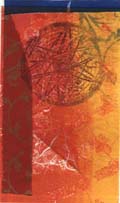To continue from yesterday’s posting about monotypes, here’s more of what Frank Howell had to say about monotypes:
Monotypes, as we are familiar with them, became relatively common late in the nineteenth century but the technical knowledge to create them has existed about as long as the intaglio process which dates from the fifteenth century. Although the means to create the monotype existed, the potential of its practice awaited the artists and artistic conditions necessary for it to emerge. The first known reference to the monotype was early in the nineteenth century.
Although certainly not the first artist to use the monotype, the greatest innovator and practitioner of the medium in the nineteenth century was Edgar Degas. Degas did more than any other artist to make the monotype an important and viable medium for artistic expression. In only a little over fifteen years of exploration of the medium, Degas created over four hundred and fifty monotypes. His perception and sense of experimentation gave to artists and the world insights into color, light and spontaneity unique to the monotype.
Monotypes, because of their innate uniqueness as a printed painting of which there is only one, are an important addition to any fine art collection.

